Evolution without Revolution by Álex Medina
- 03/03/2018
111 views

In his third season with Kawasaki, the Irish rider Jonathan Rea has won his third world Superbike championship with a Ninja ZX-10RR that I got to try at Jerez. This is a machine that represents an evolution of the championship winning bike of last year and that is still effective and surprisingly balanced.
Having the chance to try the Superbike world champion’s bike is, without a doubt, a privilege. Doing so at the Jerez track, one of my favourites, is an extra motivation seeing as the Andalusian layout, and its new asphalt, is technical with curves of different radii, linked areas and, from my point of view, is one of the most exciting circuits of the championship.
It’s not the first time I’ve got on a Superbike world champion’s Kawasaki, but that doesn’t make it any less of an exciting experience for a street bike tester whose impressions have to be taken in the right measure; meaning that these impressions have been formed after just a few laps with a certain pressure and riding at an infinitely slower pace compared to an active rider. In other words, a long way off from the rhythm at which the ZX-10 RR can bring out the best of itself.
However, it’s a very gratifying experience and with the 2016 version a memory, the 2017 bike with which Rea has won the world championship, has, from my point of view, aspects that have improved.
The 2016 version that I tried at Motorland was less powerful than the 2015 one, with a more pointed engine and a Showa BFFF fork (Balance Free Front Fork) which has been maintained in the 2017 specification.
The 2017 version is a bike similar to that of 2016 and, fortunately for Rea, this year has not suffered any transmission problems like it did in 2016.
The beginning of the development of this 2017 version was made by his KRT partner Sykes and not Rea; the reason being that Sykes is a more critical rider, something that can be checked in the 2013 one when I tried the bike with a very radical tuning heavily loading the front axle.
In the 2017 pre-season the bike came to life with a tuning adapted to Tom’s stop&go style, it was more nervy, more violent when accelerating. But as the season advanced, which ended with the attainment of the Rea’s third world title, it was adjusted to Rea’s riding style, a man who prefers a more docile and easier-to-ride bike.
The truth is that this is the sensation that I got from Rea’s bike in Jerez. A very powerful bike for those of us who are not world superbike riders and I believe also for the rest of us mere mortals, but which nevertheless is easy to ride, with a radical riding position and a pleasant feel in spite of all the work done by the electronics controlling everything, it is very pleasant and also….it’s a festival of explosions and special effects!
The 2017 version
The 2017 version is very similar to last year’s one as regards the cycle parts but work at engine level sought reliability. They also managed to raise the engine’s rpm and a new shifter ratio was incorporated.
As regards the engine’s running speed, it’s worth remembering that this is 2018 and the regulations and limitations are going to specifically hurt Kawasaki. Amongst other things, it won’t be easy to find a gear ratio that complies with the new limitations, but that’s another story….
Focusing on the 2017 version, throughout the season, race by race, and during the few test days programmed, it was adapted to Rea’s riding style. The new character of the bike is adapted to the tuning of the chassis and was worked on in depth for power delivery.
In this sense, the work on the electronics was very intense, it was carried out all year round and also the team’s electronics engineer, on occasion, had to take the work home with him to carry on with the tests and more testing.
As regards the suspension, the Showa fork has been maintained. The team continue to work with Kawasaki with superb results and then came the evolution in the rear shock which was an important step forward. The improvements came not only at the level of traction when entering and leaving the corners, but they also achieved an improvement in the bike’s behaviour when braking at the moment of transition.
Compared to the 2016 bike, this 2017 version has gained stability in braking and traction. This improvement in braking stability has been very positive as it has affected situations on tracks with good asphalt as well as others with more bumps.
On Rea’s bike, I was surprised by the entry into the curve when braking with a shift in weight and possibly an improvement in the suspension which allowed me to place the bike in a better position to trace the line, to find the apex of the curve. Logically it’s important to be able to open the throttle as soon as possible when leaving the curve, which is why it’s important to have the bike well positioned on braking.
The “Blip” effect
All the Superbike motorcycles have the so called “Blip” system. A system that was first used with Yamaha in 2008. it was first tested on the testing bench with Yamaha as the first Superbike to introduce the ride by wire with a small servo-motor.
A small servo-motor was also used in the injection bodies but at that time, 10 years ago, they were slow and inaccurate. The “Blip” effect whereby the electronics managed the “engine brake” effect, is something that still surprises me: a mysterious “auto-blip” appears without opening the throttle. It’s an effect similar to that that we want in a street bike when, with the clutch pressed, we give a touch of throttle to get the gear engaged.
It’s not the first time that I experience the sensation that it’s the electronics that’s controlling the bike’s reactions, but it still surprises me. Going down the gears, and automatically, the electronics themselves control the engine braking taking into account a series of parameters such as the speed, brake position, inclination of the bike, the gear you’re in or even…the curve you’re going into! Even if you enter the curve aggressively, the bike controls itself to achieve the minimum movement possible. This really is surprising as it also gets, whatever the surface, the best grip possible when entering the curve.
If the back wheel doesn’t touch the ground when braking, as the Superbike riders often do, during the phase where the bike remakes contact with the asphalt, the electronics tries to make this transition as minimally violent as possible. It’s not just a matter of minimising the effect of the areas with bumps, but to have the bike under control at the time of turning.
In the case of Rea, his precision when braking is unusual. It is constant and regular, he brakes in the same place to the millimetre, lap after lap and he’s very precise in the manoeuvres…a man/machine!
The bike I had the luck to try had Rea’s setting. The engine braking effect is improved and I was pleasantly surprised by the feel of the gear changes. In the last few seasons, the gears were one of the few problems of Kawasaki and these problems even cost them some coming off the track or minor falls. But in 2017 important improvements arrived, achieving a more precise feel in spite of the difficulty that that implies if you work on the gears of a street bike.
We mustn’t forget that the limitations in this regard are becoming stricter and stricter and the base of the Superbikes are large production engines. but by working on the electronics (of course!), on the pinions and pins and looking for treatments capable of providing hardness and, at the same time, minimal friction, they have achieved a change that has not only stopped causing problems, but has an exquisite feel.
Having fun in Jerez
The Jerez track is, as I mentioned at the beginning, a fantastic circuit. It has some ruts in the middle of the layout like in curve 1, which has to be taken on the inside to avoid the bumps and also I felt a frizzy area in the left straight after Dry Sack.
In this setting, with the Pirelli SC-1 which are not normally used during the race but are normally used to start the work of tuning up on Fridays, I enjoyed a bike with incredible power, reaching 230 ps, but which Kawasaki does not officially state, nor does a team member even dare say aloud.
Life on Rea’s bike, from curve to curve passes by quickly and has a very exciting edge when you decisively open the throttle. It seems that the bike I tried had Rea’s settings and he likes a slightly less intrusive “wheelie control”. So the sensation that the front wheel was pointing up to the sky when throttling up coming out of the fastest curve on the track (Sito) was one of those you don’t forget. Linking the gears towards Dry Sack was a festival of emotions.
I got the feeling that in the slow curves (Dry Sack and Jorge Lorenzo) it was harder to enter than in the fast ones but whatever, I felt that the Ninja ZX-10RR “thoroughbred” in spite of its base being a street bike.
The truth is I didn’t try to change the map like Rea does: 1 is more violent and is used at the start of the race and 2 as of the middle of the race. Neither did I play with the control level of the traction. I just tried to control around 240ps of power, getting used to a festival of explosions, sensations and in trying to draw conclusions….a lot of work in just a few laps!
Conclusions
I think that the Kawasaki Ninja ZX-10 RR is possibly the best Superbike in spite of it not having the best base. It is a bike which has been much and well worked on in order to get a very high performance out of it.
In this sense and without a doubt, a large part of the merit is of Team Provec who have managed to put together a very good technical team. A team that has worked together for a long time. They know the motorbike and its development in depth. And that means, amongst other things, that their experience prevents them from repeating certain errors.
That is, having discarded some ideas along the way allows them to concentrate solely on what works and above all on not wasting time with useless tests. Neither should we forget that they have the two best riders in the Paddock.
We all know that Rea is out of the ordinary, but Sykes, in spite of his riding and very particular tuning and of being a very critical rider, won the 2013 world championship and his work on the development of the green bike has been very positive.
The relations between the team and Japan are very fluid, they have been consolidated over time and basically…it works!!
Original Source[ Kawasaki EU ]


















![ktm moto 680x450 150x112 - [New Model] KTM Launched 4 New Models from ADVENTURE Series-INTERMOT-](https://gc-img.webike.net/@wid-news/wp-content/uploads/2016/10/ktm-moto-680x450-150x112.png)

![20180214 aip sp2 01 680x641 150x112 - [New Product] Alpinestars released riding gloves equipped with protector.](https://gc-img.webike.net/@wid-news/wp-content/uploads/2018/03/20180214_aip-sp2_01-680x641-150x112.jpg)


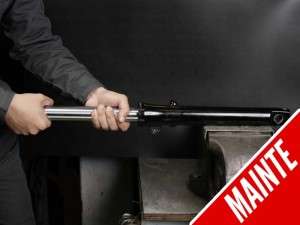
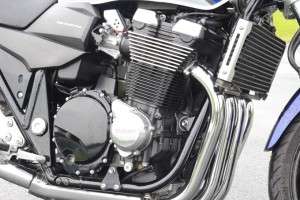
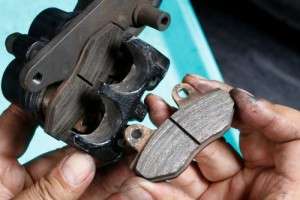

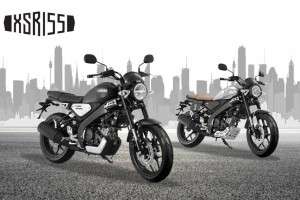
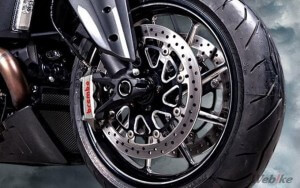
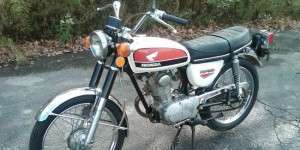









 Brake Disc](http://global-fs.webike-cdn.net/catalogue/images/84812/DIA320_BRAKE_DISC_KIT_KAWASAKI_01_s.jpg)
